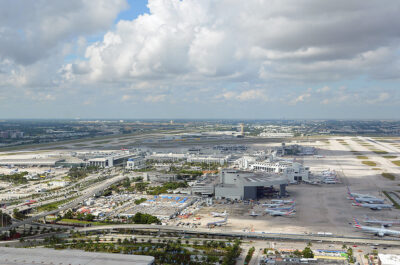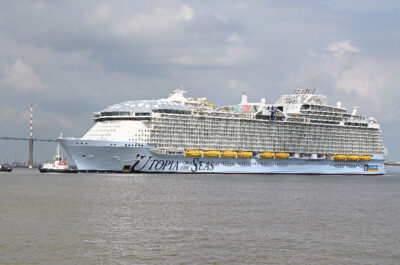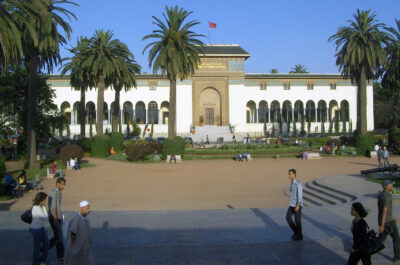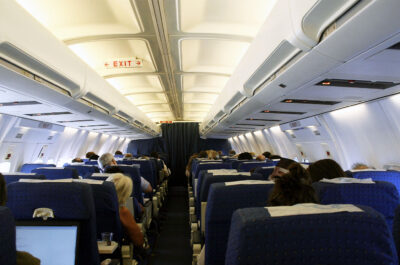In 2003, according to the World Tourism Organization (WTO), the Middle East region recorded a…
In 2003, according to the World Tourism Organization (WTO), the Middle East region recorded a 10 per cent increase in international tourist arrivals. This followed 11 per cent growth in 2002 and a 4 per cent decline in 2001, and was the highest of any region in the world. One of the main reasons for the region`s strong performance over the last couple of years has been the increased demand for intra-regional travel. After the events of 11 September 2001 and the continued threats of terrorism, many Arab tourists – accustomed to take several trips a year to destinations in Europe and North America – decided to take their holidays within the region for fear of discrimination in Western countries.
Lebanon is a good example. The Mount Lebanon region outside Beirut, once the summer paradise of Gulf travellers because of its cooler climate and green environment, had been deserted after the civil war by those same travellers in search of more sophisticated holiday surroundings. But they returned in 2002 and preliminary estimates suggest that summer 2003 broke all visitor records in the region.
Although there are still several gaps in terms of statistical trends through 2003, WTO`s World Tourism Barometer points to growth for all key countries except Jordan (-3 per cent). Most destinations suffered declines from March through May because of the Iraq war and SARS, but demand picked up after the summer.
Governments all over the region are increasing investment in tourism infrastructure and offering incentives to facilitate private sector investment. This is one of the main reasons for Egypt`s continued success – especially the way it always bounces back after different disasters. Preliminary estimates suggest that its tourist arrivals rose by 17 per cent in 2003 – thanks in no small part to the government`s aggressive marketing and promotion, as well as its support of the industry at home and in main source markets, which have helped maintain confidence in the destination. And private sector investment has continued unabated through all the difficult times.
More relaxed visa requirements introduced by Oman in mid-2003 have already boosted tourism demand, especially from the Gulf. The number of Gulf Co-operation Council tourists staying in Oman`s hotels increased by more than 10 per cent in 2002 to 337,000, including 72,000 from the United Arab Emirates (UAE). After the UK, the UAE is Oman`s second biggest source of tourists ahead of India.
Other destinations in the region that have earmarked tourism as an important generator of economic growth include Saudi Arabia, which is investing billions of dollars in building infrastructure and in facilitating private sector investment through new tourism funds. Qatar is also encouraging private sector development, as well as pouring in government money to expand the destination`s tourism potential. On May Qatar will host the World Travel & Tourism Council`s fourth Global Travel & Tourism Summit, and discussions are in place to establish a convention bureau to tap the meetings, incentives, conferences and exhibitions (MICE) business. Its hosting of the Asian Games in 2006 will also put Qatar`s new – and planned – sports facilities on the map.
In line with the increased efforts to develop the region`s tourism potential, Middle Eastern airlines are expanding operations – primarily to Europe, but also to Asia and within the region. Even the no-frills boom has reached the region with Mena Jet scheduled to launch low-fare airline services from Sharjah to regional points last month.
The results of HVS International`s respected annual survey Middle East Hotels – Trends and Opportunities (based on a survey of 100 quality hotels representing some 31,000 rooms) show that hotel operating performance in 2002 was disappointing across most of the region – whether measured in terms of average occupancy, average daily room rate (ADR), or revenue per available room (revpar).
Average occupancy actually fell in only two of the 16 city/resort destinations surveyed – Muscat and Jeddah – as against 11 in 2001. It should be noted that the overall average of 66 per cent, up two percentage points on 2001, compared with a high of 68 per cent recorded in 2000. The increase over 2001`s level was attributed by HVS International to the sharp increase in intra-regional travel.
Overall ADR in the region fell by almost 4 per cent to US$81. One of the main reasons for the downward trend was that the increased hotel supply in many parts of the region resulted in hoteliers adopting a more aggressive pricing policy to maintain occupancy levels. This resulted in a decline in ADR in 13 of the cities surveyed. Hotels in Egypt came under significant pressure, with the Pyramids area of Cairo and Hurghada suffering declines in ADR of 20 per cent and 14 per cent respectively.
Beirut was the only city in which ADR increased – by 9 per cent. This was attributed to increased arrivals from lucrative Arab markets, as well as the opening of two additional five-star hotels, which achieved higher rates and therefore boosted average performance in the Lebanese capital. Consequently, revpar rose by 13 per cent to US$63. The two new deluxe properties were the 293-room Movenpick and the 199-room Crowne Plaza.
Revpar for the Middle East region remained stable at US$54 in 2002, after an 11 per cent drop the previous year, although eight cities recorded increases. After Beirut, the best performer was Kuwait City. Trading figures on the performance of hotels in the Middle East & Africa from Deloitte & Touche`s HotelBenchmark Survey confirm the dismal performance of the industry during the first half of 2003, with occupancy levels plummeting by 8 per cent, to just 54 per cent. (Actual figures cannot of course be compared with those in HVS`s survey.)
With the industry reeling from the impact of the SARS crisis in Asia and the Iraq war, demand faltered, resulting in double-digit declines in revpar for nearly 60 per cent of the cities tracked through the survey. Kuwait and Doha were the only cities to buck this trend, both achieving impressive double-digit revpar growth. Encouragingly, hotels in Manama, the Red Sea resorts, Amman, Muscat and Dubai all experienced improved operations during the month of June, recording increases in both occupancy and ADR compared with June 2002.
Preliminary results for later months confirm that the recovery was well underway before the end of 2003, and that year-end results would be significantly better than the first half.
Theodore is the Co-Founder and Managing Editor of TravelDailyNews Media Network; his responsibilities include business development and planning for TravelDailyNews long-term opportunities.






















































































































































































